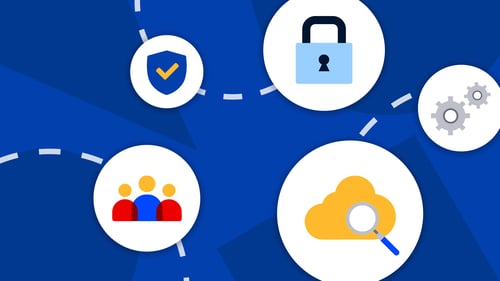What's the hold up? Five ways to optimize your legal hold process

Legal holds, the process of notifying custodians to preserve relevant documents and data for potential litigation or regulatory investigations, are essential to eDiscovery compliance. They are critical for safeguarding companies against data destruction and the expense of spoliation sanctions. However, when parties don’t approach litigation holds strategically, they can quickly become a drain on resources.
In this blog, we’ll consider five practical legal hold strategies that businesses can adopt to significantly reduce the time and costs associated with data preservation while ensuring compliance.
1. Educate employees on legal hold obligations
Employee awareness is pivotal to ensuring successful legal holds. In fact, a federal appellate court recently affirmed a trial court’s decision that a party acted in bad faith when it “took no action” to educate custodians about a legal hold. This inaction led to the destruction of cell phone data due to routine records retention protocols.
An informed workforce is more likely to adhere to legal hold directives, reducing the risk of accidental data destruction and subsequent legal complications. Well-trained employees understand the importance of avoiding deleting, modifying, or ignoring potentially relevant information. Additionally, fostering a culture of compliance through training can lead to more vigilant employees, further safeguarding the organization.
2. Implement a centralized legal hold process
A centralized approach to legal holds minimizes duplication of efforts, promotes uniform understanding of legal hold requirements, and ensures a cohesive strategy, optimizing resource utilization. It standardizes data preservation processes, ensuring that all necessary steps are followed promptly, and in doing so, reduces the time and effort spent on legal hold administration. Plus, uniformity ensures that everyone follows the same protocols, decreasing the likelihood of errors, misunderstandings, and missed steps.
Designating a dedicated team or individuals to manage legal holds also strengthens communication among legal, IT, and other relevant stakeholders. Clear communication ensures that legal hold notifications reach the right individuals at the right time. It also reduces the likelihood of miscommunication, follow-up emails, and phone calls, saving time and effort for everyone involved.
3. Embrace proactive information governance
Information governance refers to the framework of policies, processes, and technologies that an organization uses to manage its information effectively, ensure compliance with laws and regulations, and support its business objectives. A proactive approach to information governance is the cornerstone of cost-effective legal holds. By regularly purging irrelevant and outdated data, businesses can drastically reduce the volume subject to legal holds, decrease storage and processing costs, and narrow the scope of potentially relevant information, enabling a more focused and efficient legal review. Here’s how:
- Data classification: Information governance helps organizations identify and classify data, determining what information is relevant. By understanding the data landscape, organizations can avoid preserving irrelevant data, which reduces storage costs. Moreover, avoiding over-preservation is an effective strategy for risk avoidance: if you don't have it and you're compliant, you don't have to produce it.
- Data minimization: Proper information governance practices allow organizations to minimize the unnecessary data they retain. By getting rid of redundant, obsolete, and trivial (ROT) data, legal teams have a smaller dataset to manage during legal holds and downstream in discovery.
- Improved search: A well-organized information governance system makes finding relevant information easier and faster, conserving both time and resources.
- Defensible disposition: Information governance policies provide a framework for defensible disposition. This defensibility can protect organizations from spoliation challenges.
4. Invest in advanced data management tools
Advanced data management tools can significantly drive down the costs of eDiscovery by streamlining processes, improving efficiency, and optimizing data handling. Here are some types of advanced data management tools that can help reduce eDiscovery costs.
- Automated legal hold software: Automated tools reduce the administrative workload of notifying and reminding custodians of their responsibilities, ensure timely responses, and minimize follow-up.
- Integrated legal hold solutions: Integrated platforms that combine legal hold management with eDiscovery capabilities streamline the entire process, reducing manual handoffs and saving time and effort.
- Data mapping and indexing tools: These tools create comprehensive maps of an organization’s data, allowing legal teams to learn where data resides. By understanding the data landscape, legal teams can target their legal holds more precisely.
- Identity mapping and analysis tools: These tools centralize custodian data from various sources by associating each email address with a unique platform identity. With this distinct identity, legal teams can set preservations, streamline searches, and filter results more effectively, enhancing data management for specific users or custodians.
- Reporting and audit tools: Tools that provide comprehensive reporting and auditing capabilities allow organizations to track legal hold compliance, including custodian responses and actions. Detailed reports not only mitigate the risk of legal challenges and their associated costs but also serve as an effective tool for engaging managers and ensuring outside counsel remain informed when necessary.
5. Negotiate vendor contracts wisely
Selecting the right tool for your needs is paramount. Just as some individuals thrive with the luxury of a Cadillac, others find everything they need in the simplicity of a Kia. For organizations, it's the same with legal hold products. While it’s not uncommon for legal hold solutions to come bundled with extra features, it's crucial to discern what's truly essential for your project. Look for a solution that streamlines the process without being weighed down by unnecessary frills and expenses.
Make sure your vendor contracts include the following features:
- Preservation of data at its source: Opt for a tool that allows you to preserve data directly within the source application.
- Seamless integration: Make sure your solution offers the ability to schedule, send, and track notifications all within a single interface to streamline your efforts. It should also allow you to unify your workflow across the EDRM, from information governance through data processing.
- Cost predictability: Fixed or predictable pricing structures ensure that organizations fully recognize the potential expense of legal holds, allow for better budgeting, and prevent unexpected expenditures.
- Flexibility: Flexible contracts enable organizations to scale services up or down based on fluctuations in the volume of legal holds, optimizing costs and resources based on their workload.
- Training and support: Look for comprehensive training to shorten employees’ learning curve and reduce the risk of errors. Another important consideration during your search for a legal hold tool, and during its implementation, is drafting or updating a defensible, reasonable process. This process is crucial for guiding team workflows and will serve as a dependable reference if ever challenged in the future.
Stop overspending on legal holds
Legal holds can be time-consuming, but they don’t need to be as costly or taxing as you might think. A proactive, centralized information governance program, complemented by technology and training, can significantly reduce the costs and effort associated with litigation holds.
Discover how Onna’s Integrated Legal Hold solution can streamline your eDiscovery processes, saving you both time and money. Take a tour or book a personalized demo today.
 eDiscovery
eDiscovery Collections
Collections Processing
Processing Early Case Assessment
Early Case Assessment Information Governance
Information Governance Data Migration
Data Migration Data Archiving
Data Archiving Platform Services
Platform Services Connectors
Connectors Platform API
Platform API Pricing Plans
Pricing Plans Professional Services
Professional Services Technical Support
Technical Support Partnerships
Partnerships About us
About us Careers
Careers Newsroom
Newsroom Reveal
Reveal Logikcull by Reveal
Logikcull by Reveal Events
Events Webinars
Webinars OnnAcademy
OnnAcademy Blog
Blog Content Library
Content Library Trust Center
Trust Center Developer Hub
Developer Hub